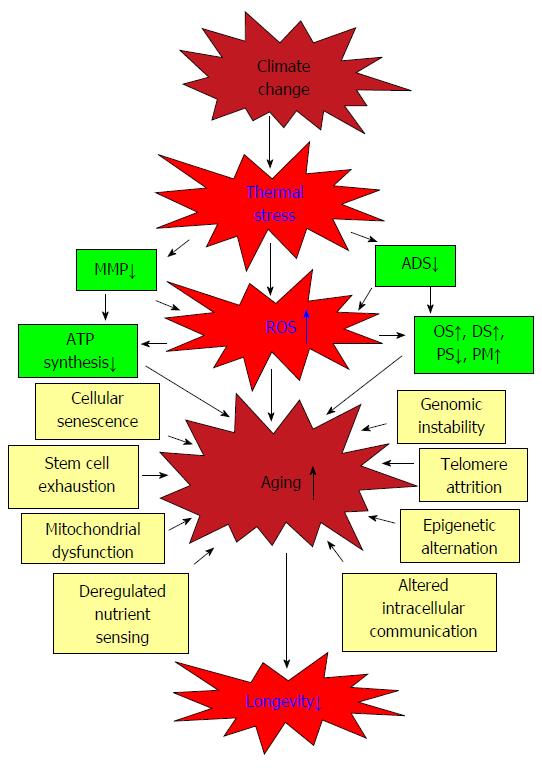Copyright
©The Author(s) 2016.
World J Biol Chem. Feb 26, 2016; 7(1): 110-127
Published online Feb 26, 2016. doi: 10.4331/wjbc.v7.i1.110
Published online Feb 26, 2016. doi: 10.4331/wjbc.v7.i1.110
Figure 5 Possible correlation between global warming and longevity modulated by oxidative metabolism in animals.
Climate change is responsible to increase the mean global temperature which may lead to produce ROS in susceptible animals. Increase IT can also be responsible to produce ROS via diminishing ADS and MMP. This in turn may increase aging in animals by elevating oxidative stress. Other vital processes such as decrease in ATP synthesis, increasing the chance to DS, PS and PM in animals can lead to additional ROS production and thereby, shortening their longevity. Due to thermal stress, physiological processes such as genomic instability, telomere shortening and mitochondrial dysfunction can also lead to elevate aging in animals which may ultimately decrease their longevity. ROS: Reactive oxygen species; IT: In temperature; ADS: Antioxidant defence system; MMP: Mitochondrial membrane potential; DS: Disease susceptibility; PS: Proteostasis; PM: Protein misfolding.
- Citation: Paital B, Panda SK, Hati AK, Mohanty B, Mohapatra MK, Kanungo S, Chainy GBN. Longevity of animals under reactive oxygen species stress and disease susceptibility due to global warming. World J Biol Chem 2016; 7(1): 110-127
- URL: https://www.wjgnet.com/1949-8454/full/v7/i1/110.htm
- DOI: https://dx.doi.org/10.4331/wjbc.v7.i1.110









